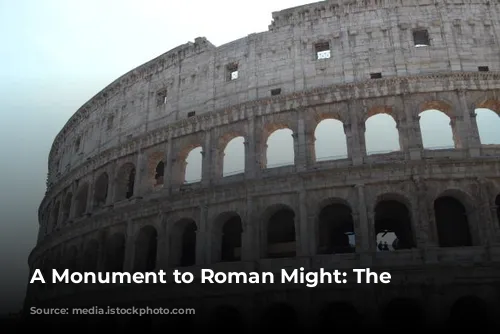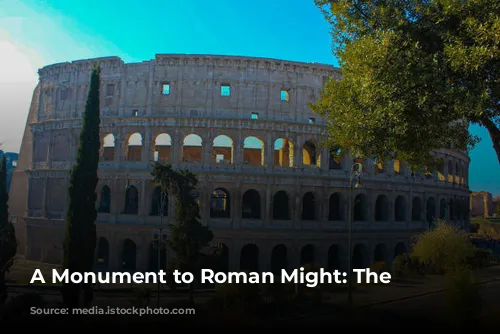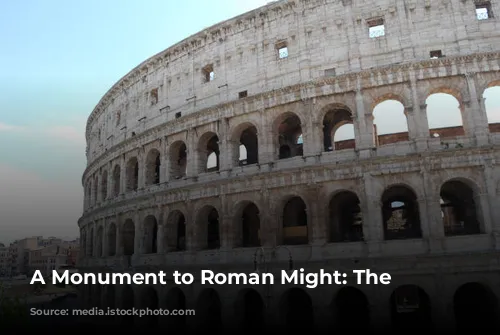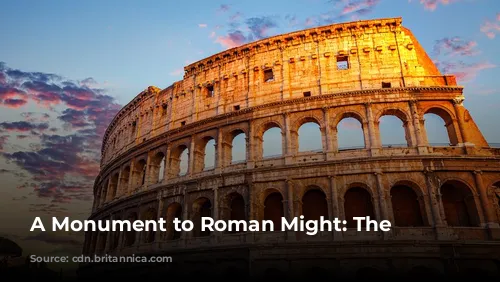The Colosseum, a towering testament to Roman engineering and artistry, stands as one of the few largely intact structures from the Roman Empire. It is a breathtaking sight, captivating millions of visitors each year. This iconic landmark not only showcases the architectural brilliance of the ancient Romans but also serves as a significant source of revenue for the Italian government. In 2018, the Colosseum, together with the Roman Forum and Palatine Hill, generated an impressive €53.8 million, making it the top tourist attraction in Italy. This remarkable success speaks volumes about the enduring appeal of this historical treasure.
From Arena to Fortress, then to Quarry: The Colosseum’s Transformation
Over the centuries, the Colosseum has witnessed a fascinating metamorphosis, reflecting the ebb and flow of history. Following the demise of the Western Roman Empire, the Colosseum fell into a state of disrepair. The once-grand arena was transformed into a fortress by the Frangipane and Annibaldi families during the 12th century, its imposing structure providing a strategic advantage. In the late 15th century, Pope Alexander VI authorized the use of the Colosseum as a quarry, its magnificent stones being repurposed for other constructions. This period of neglect, spanning over a thousand years, left the Colosseum battered and scarred. However, in the 1990s, state-funded restoration efforts commenced, breathing new life into this architectural gem. The Colosseum’s journey from an arena to a fortress and ultimately a quarry underscores the resilience of this historical structure.
A Legacy of Spectacle and Entertainment
The Colosseum was born from a desire to revitalize Rome, a vision fueled by Emperor Vespasian in the wake of the tumultuous year of the four emperors, 69 CE. Like other amphitheatres of its time, the Colosseum was designed as a venue for entertainment, hosting thrilling gladiatorial combats, heart-stopping animal hunts, and even elaborate mock naval battles. The Colosseum’s purpose was to captivate and entertain the Roman public, providing a spectacle to remember. It was a place where the ordinary citizen could forget their daily struggles and immerse themselves in the drama and excitement unfolding before their eyes.

From Construction to Completion: The Colosseum’s Genesis
Construction of the Colosseum, under the reign of Emperor Vespasian, commenced between 70 and 72 CE. The finished structure was dedicated in 80 CE by Emperor Titus, Vespasian’s son and successor. Emperor Domitian added the Colosseum’s fourth story in 82 CE. It’s worth noting that the Colosseum’s construction was financed with plunder from Titus’s conquest of Jerusalem in 70 CE, and Jewish slaves from Judaea provided the labor force. The Colosseum stands today as a monument to Roman engineering prowess, but its construction also reveals a darker side of the Roman Empire, highlighting the exploitation and suffering endured by many.
An Architectural Masterpiece: The Colosseum’s Structure
The Colosseum, also known as the Flavian Amphitheatre, is an awe-inspiring elliptical structure crafted from stone, concrete, and tuff. Rising to a height of four stories, it measures an impressive 189 by 156 meters and had the capacity to accommodate as many as 50,000 spectators. The Colosseum was renowned for its gladiatorial combats, a brutal spectacle that entertained the masses. It’s a testament to the Romans’ skill in building and engineering, showcasing their ingenuity and ability to create grand structures that could accommodate vast crowds. The Colosseum is a true marvel of Roman engineering, a testament to their ability to bring together creativity and practicality.
A Grand Arena: The Colosseum’s Design and Function
The Colosseum was situated on the grounds of Nero’s Golden House, just east of the Palatine Hill, a strategic location that allowed it to be seen by many. The lake that served as the centerpiece of Nero’s palace complex was drained, and the Colosseum was built in its place. This decision was as much symbolic as it was practical. Vespasian, whose ascent to the throne was marked by humility, chose to replace the tyrant Nero’s private pleasure lake with a public arena that could entertain tens of thousands of Romans. This act was a powerful symbol of Vespasian’s commitment to the people and his vision for a more democratic and inclusive Rome.

An Architectural Innovation: The Colosseum’s Unique Features
Unlike earlier amphitheatres, which were often carved into hillsides for structural support, the Colosseum is a freestanding structure made of stone and concrete. It utilizes a complex system of barrel and groin vaults, creating a sturdy and expansive structure. The Colosseum’s exterior is adorned with three tiers of arcades, each framed by engaged columns in the Doric, Ionic, and Corinthian orders. This ascending arrangement of columns became a cornerstone of Renaissance architecture, demonstrating the enduring influence of the Colosseum’s design. The Colosseum’s construction involved a combination of high-quality materials – travertine for the main framework and facade, volcanic tufa for the secondary walls, and concrete for the inner bowl and arcade vaults. These materials were carefully selected to ensure the structure’s longevity, a testament to Roman engineering expertise. The Colosseum’s innovative design and construction techniques continue to inspire architects and engineers today.
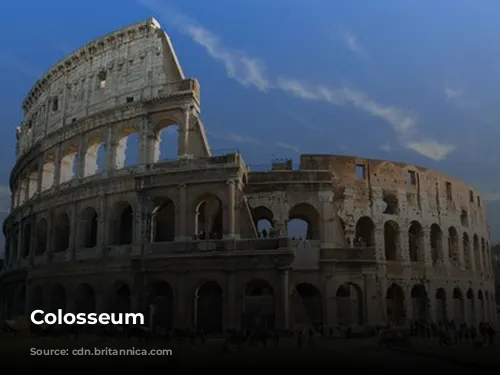
A Welcoming Arena: The Colosseum’s Amenities
The Colosseum’s design included thoughtful amenities to enhance the spectator experience. The vast arena could accommodate 50,000 spectators, who were protected from the sun by a massive retractable velarium, a giant awning. The velarium was supported by masts extending from corbels built into the Colosseum’s top story, requiring hundreds of Roman sailors to manipulate the intricate rigging. The Colosseum provided a comfortable and enjoyable environment for its patrons, ensuring their safety and comfort.
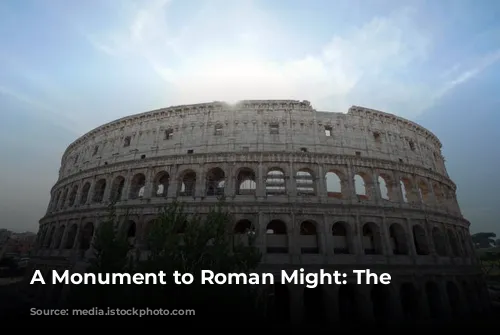
A Stage for Thrilling Spectacle: The Colosseum’s Entertainment
The Colosseum was the stage for countless gladiatorial contests, animal hunts, and mock naval battles, offering a thrilling spectacle for the Roman public. The gladiatorial combats were particularly popular, drawing huge crowds who cheered on their favorite warriors. The Colosseum was a place where the ordinary citizen could escape the mundane and immerse themselves in the drama and excitement of these events. The Colosseum’s legacy extends beyond its impressive architecture. It stands as a reminder of the Romans’ fascination with spectacle and entertainment, and their love for the gladiatorial games, a tradition that continues to fascinate audiences today.
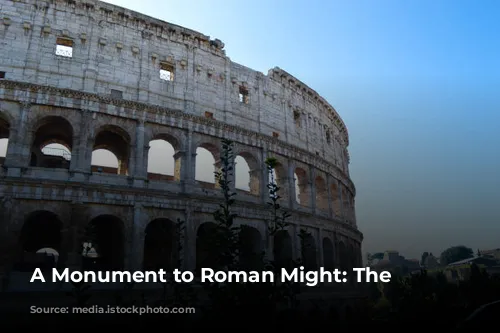
From Church to Fortress: The Colosseum’s Decline and Rebirth
During the medieval period, the Colosseum served as a church, a testament to its enduring presence in Roman life. It later became a fortress, utilized by the Frangipane and Annibaldi families, further highlighting its strategic importance. The Colosseum’s grandeur, however, was gradually eroded by time, lightning strikes, earthquakes, and vandalism, leading to its decline. The Colosseum was stripped of its marble seats and decorative materials, becoming little more than a quarry for over a thousand years.
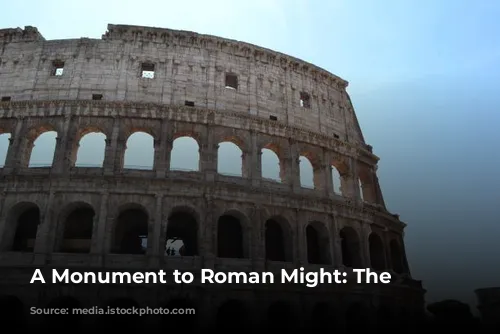
Preservation and Restoration: The Colosseum’s Revival
The 19th century saw the beginning of the Colosseum’s preservation, spearheaded by notable efforts led by Pope Pius VIII. In the 1990s, a comprehensive restoration project breathed new life into this ancient landmark. The Colosseum, once a forgotten relic, is now a vibrant testament to the enduring power of Roman civilization. The restoration efforts have ensured that this magnificent structure will continue to inspire and amaze visitors for generations to come.
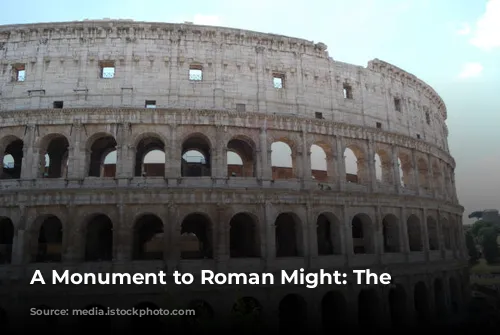
A Timeless Icon: The Colosseum’s Enduring Legacy
The Colosseum, a masterpiece of Roman engineering and architecture, continues to captivate the hearts and minds of visitors from around the world. It is a timeless icon that embodies the grandeur and resilience of ancient Rome. The Colosseum stands as a powerful reminder of the past, inviting us to reflect on the civilizations that came before us and the lessons they offer for our own time. It’s an enduring symbol of human ingenuity and the enduring power of art and culture to transcend the boundaries of time. This magnificent structure is a timeless symbol of human creativity and the indomitable spirit of ancient Rome.
